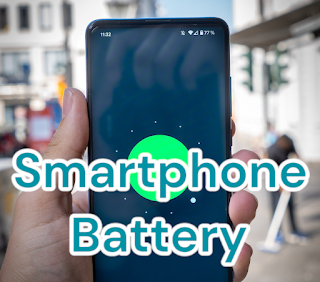Here's How to Maximize Smartphone Battery Life While Traveling
In an era where smartphones are essential travel companions, preserving battery life is a top priority. Whether you're navigating unfamiliar terrain, capturing breathtaking moments, or staying connected with loved ones, a charged phone is crucial. Here's a comprehensive guide on how to save smartphone battery when traveling, ensuring you stay powered up throughout your journey.
1. Optimize Screen Brightness and Timeout Settings
The display is one of the most power-hungry components of a smartphone. Lowering the screen brightness and reducing the screen timeout duration can significantly extend battery life. Adjust these settings in your device's display preferences to strike a balance between visibility and conservation.
2. Activate Battery-Saving Mode
Most smartphones offer a battery-saving mode that conserves power by limiting background processes, reducing screen brightness, and optimizing performance. Activate this feature in your device's settings when battery levels are running low or when you anticipate a long day without access to charging.
3. Disable Unnecessary Connections
When traveling, you may not always need features like Bluetooth, Wi-Fi, or NFC. Disable these connections when not in use to prevent your phone from constantly searching for and trying to connect to nearby devices or networks, which can drain battery life.
4. Download Maps for Offline Use
Avoid constant data usage and GPS connectivity by downloading maps for offline use. Apps like Google Maps and Apple Maps allow you to save areas for later use, reducing the strain on your battery caused by continuous GPS tracking.
5. Limit Background App Refresh and Notifications
Many apps refresh content in the background, consuming valuable battery life. Go into your device settings and selectively disable background refresh for apps that don't require constant updates. Similarly, reduce the frequency of push notifications, allowing only essential alerts to come through.
6. Use Airplane Mode in Low or No Signal Areas
In areas with weak or no signal, your smartphone works harder to maintain a connection, draining the battery quickly. Switching to Airplane Mode disables cellular, Wi-Fi, and Bluetooth connections, conserving battery power for essential functions like camera and offline apps.
7. Minimize Camera Usage and Optimize Settings
Capturing memories is an integral part of travel, but constant use of the camera app can be a major battery drain. Minimize unnecessary shots and optimize camera settings (e.g., turn off flash, reduce HDR mode) to conserve power. Consider using a dedicated camera for extensive photography.
8. Manage Location Services
Location services provide valuable functionality, but they also use a significant amount of battery power. Selectively grant location access to essential apps, and switch to battery-saving location modes (e.g., GPS only or Wi-Fi and mobile networks) when high precision isn't necessary.
9. Carry a Portable Power Bank
Invest in a high-quality portable power bank to provide an emergency charge when an outlet isn't readily available. Ensure it's fully charged before embarking on your journey, and consider its capacity to ensure it can provide enough power to meet your needs.
10. Utilize Battery-Saving Apps
Download battery-saving apps that can help manage power-hungry processes and optimize battery usage. These apps often offer features like task killers, battery usage analysis, and customizable battery profiles.
11. Practice Efficient Charging Habits
When charging is possible, do it efficiently. Use a high-quality charger and cable, and avoid cheap, unbranded accessories that may not provide the necessary voltage and amperage. Avoid overcharging by unplugging your phone once it reaches 80-90% battery capacity.
By implementing these strategies, you can make the most of your smartphone's battery life while traveling. Remember, a little planning and mindful usage can go a long way in ensuring your device remains a reliable companion throughout your journey. Safe travels!


2 Comments
Wow keren kakak infonya makasih
ReplyDeleteOk infonya makasih
ReplyDelete